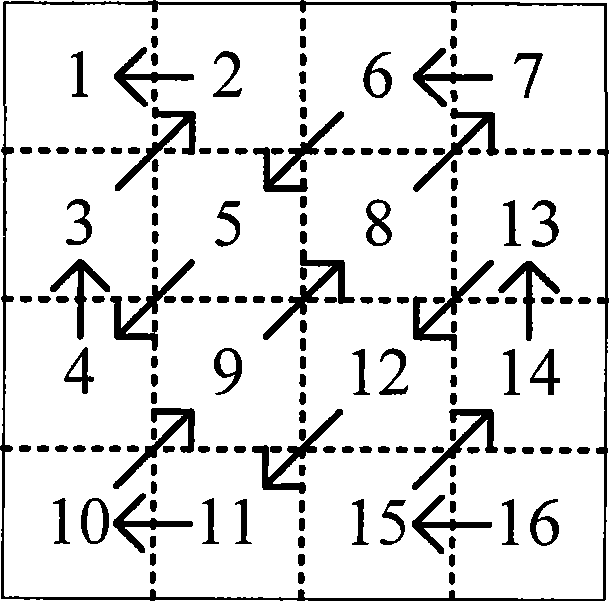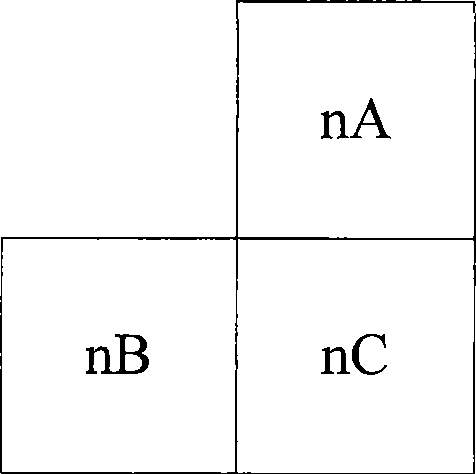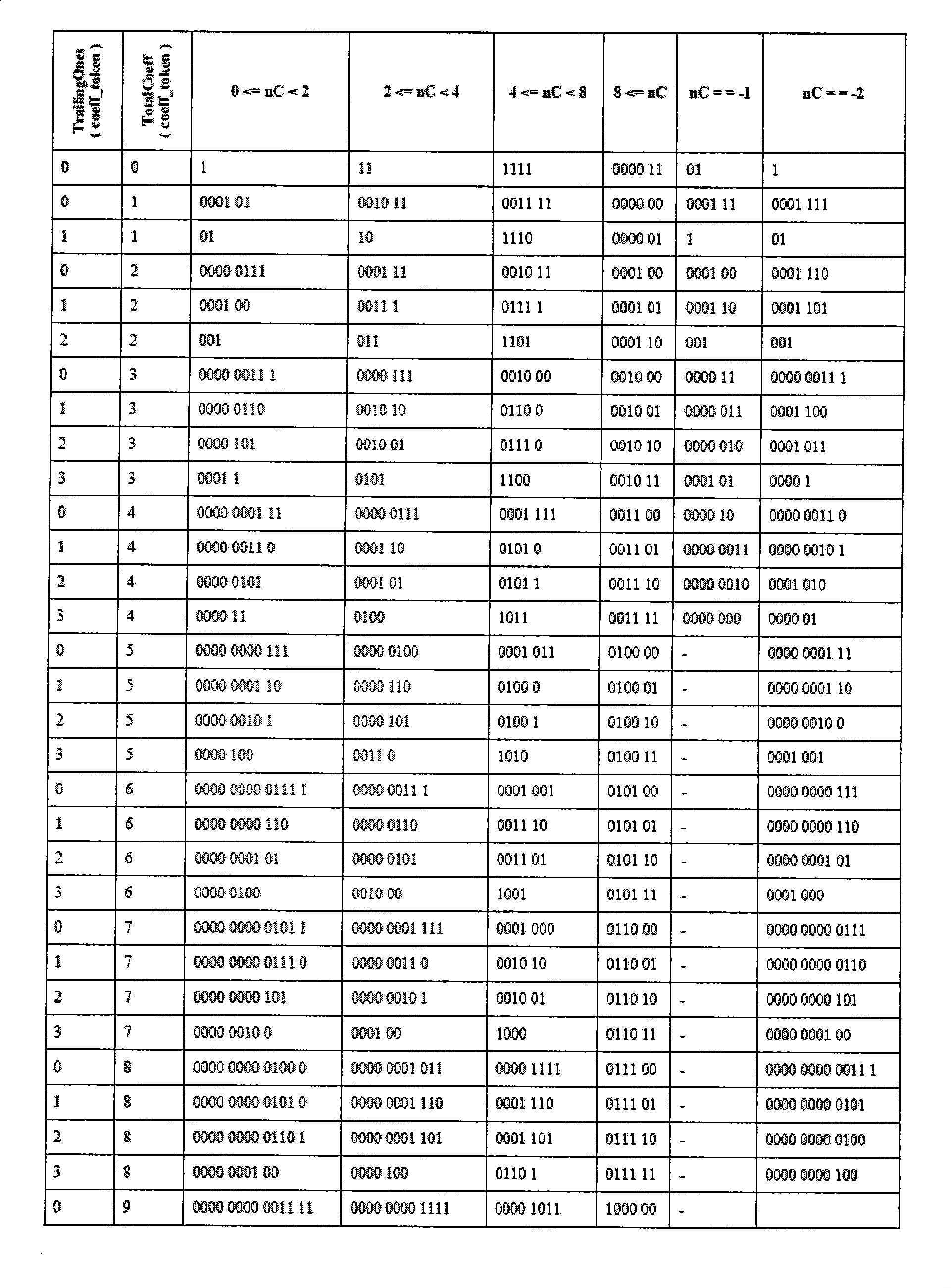Decoding method for H.264 standard CAVLC residual error coefficient
A technology of residual coefficient and decoding method, applied in the field of video and image encoding and decoding, can solve the problems of slow operation speed and large amount of operation, and achieve the effect of reducing the number of matches, reducing storage space, and reducing the number of operations.
- Summary
- Abstract
- Description
- Claims
- Application Information
AI Technical Summary
Problems solved by technology
Method used
Image
Examples
Embodiment Construction
[0035] The decoding process of the residual coefficient of adaptive variable length coding based on the context of the H.264 protocol standard is a complex process, and the residual coefficient is scanned from high frequency to low frequency in reverse zigzag (such as figure 1 After that, all codewords are analyzed one by one. Existing decoding methods usually include the following steps:
[0036] Step 1: Decode the binary group of the number of non-zero coefficients and the number of trailing coefficients, where the number of trailing coefficients specifically refers to the non-zero, absolute value in the one-dimensional coefficient matrix obtained by scanning from low frequency to high frequency The number of consecutive coefficients of 1. The maximum number of trailing coefficients is 3, and more than 3 ±1 coefficients are regarded as ordinary coefficients, and the decoding method adopts the decoding method of the number of 0s before each non-zero coefficient. The specifi...
PUM
 Login to View More
Login to View More Abstract
Description
Claims
Application Information
 Login to View More
Login to View More - R&D
- Intellectual Property
- Life Sciences
- Materials
- Tech Scout
- Unparalleled Data Quality
- Higher Quality Content
- 60% Fewer Hallucinations
Browse by: Latest US Patents, China's latest patents, Technical Efficacy Thesaurus, Application Domain, Technology Topic, Popular Technical Reports.
© 2025 PatSnap. All rights reserved.Legal|Privacy policy|Modern Slavery Act Transparency Statement|Sitemap|About US| Contact US: help@patsnap.com



